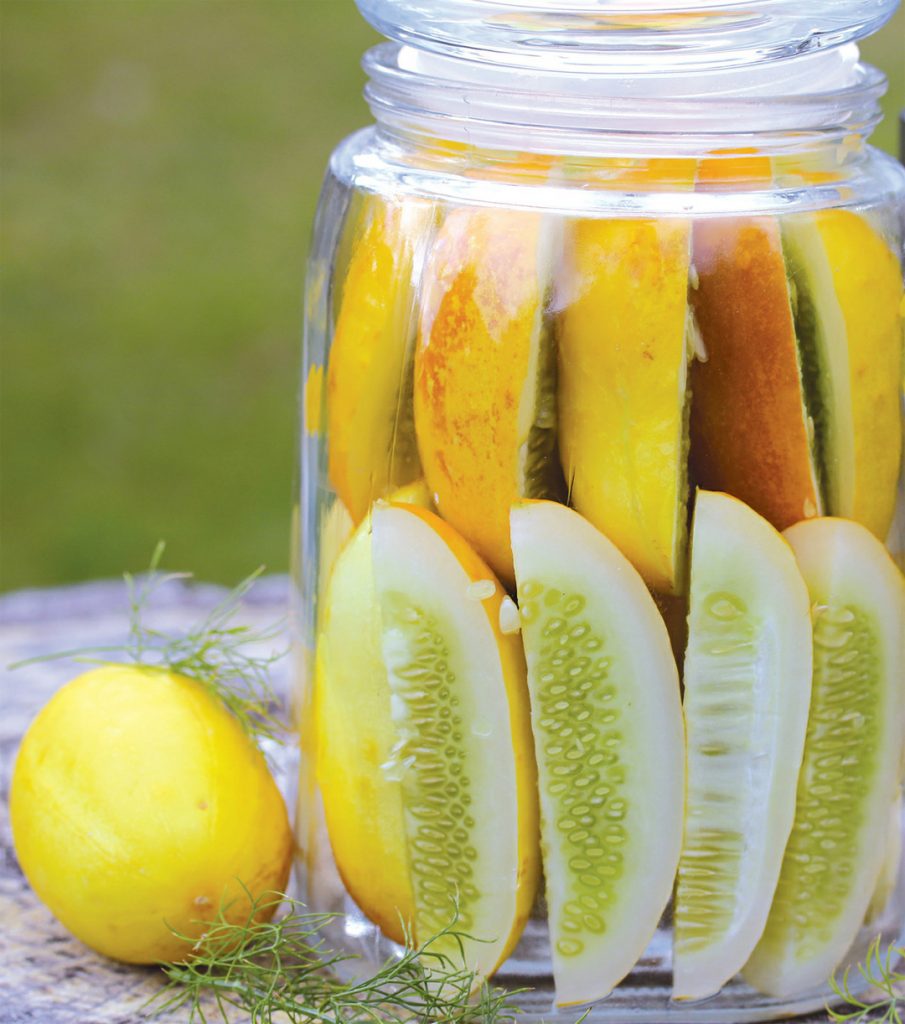 While most pickles available in grocery stores are made with white vinegar and have few, if any, nutritional benefits, these rely on the traditional method of fermentation to develop the flavors and boost the pickles’ probiotic benefits. Once you try these delicious dill pickles and discover how easy they are to make, you’ll be happy to leave the store-bought pickles behind.
While most pickles available in grocery stores are made with white vinegar and have few, if any, nutritional benefits, these rely on the traditional method of fermentation to develop the flavors and boost the pickles’ probiotic benefits. Once you try these delicious dill pickles and discover how easy they are to make, you’ll be happy to leave the store-bought pickles behind.
Ingredients
- 4 large or 6 medium cucumbers or lemon cucumbers, quartered lengthwise
- 3 dried cayenne chili peppers
- 2 garlic cloves
- 4 sprigs fresh dill
- 3 tablespoons unrefined fine sea salt or 6 tablespoons unrefined coarse sea salt
- 1½ quarts (or liters) or 6 cups filtered water
How to Make It
- In a large, clean crock or a large glass or ceramic bowl, combine the cucumbers, chili peppers, garlic, and dill.
- In a pitcher or large measuring cup, dissolve the salt in the water, stirring if necessary to encourage the salt to dissolve. Pour the saltwater over the cucumber mixture until the ingredients are submerged, leaving a couple of inches of room at the top for the ingredients to expand.
- Place a plate that fits inside the crock or bowl over the cucumber-water mixture, and weigh it down with food-safe weights or a bowl or jar of water, making sure the vegetables remain submerged under the brine as they ferment. (Ideally, choose the biggest plate possible to fit inside the crock and provide the greatest amount of surface coverage to prevent vegetable pieces from floating to the top of the crock.) Cover with a lid or a cloth, and allow it to ferment for five to seven days, or longer if you prefer a tangier taste; check the mixture periodically to ensure that it is still submerged below the water line.
- If any mold forms on the surface, simply scoop it out. It will not spoil the pickles unless it gets deeper inside the crock. It may form where the mixture meets the air, but it rarely forms deeper inside the crock.
- After one week, or longer if you prefer a tangier pickle, dish out the pickles into jars or a bowl, cover, and place in the fridge, where they will usually last for up to a year.
